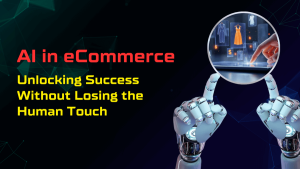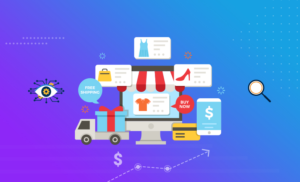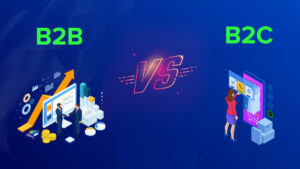Creative ecommerce CTA examples and why they work

Converting website traffic into sales isn’t easy. Online merchants often invest in creating the perfect shopping experience and implementing a flawless SEO strategy to drive traffic to their websites. Still, they end up failing to convert their site visitors to lasting customers.
If that sounds like you, we’ve got good news: there’s still hope. If you want to monetize your online traffic, whether it’s through newsletter signups or purchases, you need to make your website visitors act using a clear call to action (CTA).
This article won’t simply list out a hundred websites and state the obvious. Instead, it’ll help you understand what makes a compelling ecommerce call to action and show you real-world examples of ecommerce websites that employ effective CTAs.
What is an ecommerce call to action?
An ecommerce call to action is a marketing term used to describe an instruction to website visitors that nudges them to act. In other words, it’s content that encourages response with commercial intent.
Nearly every website on the internet uses a call to action. You’re probably familiar with the traditional “Add to cart” used on product pages, “Call us now” on the contact page, or “Learn more” on the homepage.
However, there are other types of CTAs that you probably haven’t noticed, such as “Limited time only,” “Offer valid for first 100 customers,” and “Order in the next half an hour to receive a free gift card.”
While these don’t provoke direct action, they inspire urgency or use incentives to promote an action indirectly. CTAs can be anything from a simple “Choose a size” or a more direct instruction such as “Buy now.”
You encounter CTAs everywhere in your daily life as well. Whether it’s at the gas station where they ask you to choose between regular, mid-grade, and premium fuel or at the mall where the cashier asks if you prefer cash or credit to complete your purchase, you’re constantly driven to act and follow through with your purchase.
In the digital world, CTAs are usually buttons, banners, or graphics that prompt action and lead you down a well-designed sales funnel. But achieving success with a CTA is highly nuanced.
Even if you’re using a leading ecommerce platform like Magento and employing Magento design expertise to build an attractive store, you need targeted CTAs for clicks and conversions. Let’s explore the foundations of an effective ecommerce CTA.
Elements of a winning CTA
Several factors contribute to a compelling CTA. Standard phrases like “Click here” or “Learn more” won’t compel your audience unless they’re backed by solid copy that captures their attention and inspires them to act.
Here are the fundamental elements of a winning ecommerce call to action:
Creativity
Creativity is the foundation of every successful CTA. Think about it; if your customers are being bombarded with the same old “Add to cart,” “Learn more,” and “Buy now” everywhere they go, they’ll subconsciously ignore it when they see it on your website.
Therefore, you should ensure your CTA is creative and preferably highlighted to stand out on the page and capture their attention.
Clarity
Like creativity, clarity is essential as well. If your customer doesn’t understand the underlying message behind your CTA, they won’t click through or act on it.
They aren’t going to read your copy a second time. They’ll click back and abandon the purchase without a second thought. Therefore, it’s best to ensure creativity doesn’t take precedence over clarity.
Enthusiasm
Customers today are well-informed. According to Google, 53% of shoppers research products before they buy to ensure they’re making an informed purchase. So, if you aren’t exciting customers with your CTA, it’s likely that they’ll read it and move on to another website.
Here are two CTAs for a wedding planning website: “Call us for more information” or “Let’s plan your dream wedding together!” Which one makes you want to contact the business?
No points for guessing here: it’s the second one. It shows excitement and speaks directly to your customers. So, make sure your CTA is enthusiastic and connects with your audience.
Urgency
The fear of missing out (FOMO) is a powerful emotion that drives people to act. Creating a sense of urgency by implying your customer stands to lose out if they postpone their action can help motivate them to follow through immediately.
For example, suppose you’re offering a 75% discount on a specific line of products. In that case, you can invoke FOMO by using a CTA like “Hurry! Offer valid only until stock lasts.” You’re almost guaranteed to see better click-through and conversion rates using CTAs that promote urgency.
Value
When your customer reads your CTA, they should realize the value it offers them instantly. If your CTA doesn’t make it blatantly obvious what they stand to gain by clicking through, it’s unlikely that they’ll be motivated to act.
Even if you’re offering a free product, customers won’t act unless you convey the value it provides. So, make sure you use a CTA that’s value-oriented and customer-focused.
Intent
Finally, the most crucial factor influencing the success of an ecommerce CTA is its intent. Customers don’t buy products on a whim. A purchase is usually a conclusion to an elaborate buying journey that begins from the awareness of a need.
Сustomers go through the various stages of their buying journey: first, they need something; then, want to learn more about it; and finally, decide to buy it. Therefore, you should optimize your CTA to target customers accurately during various stages.
Altering your CTA to match its placement in the buying journey and your sales funnel can help you target customer intents more effectively and increase conversions.
Five persuasive ecommerce call to action examples and why they work
Now that you understand what an ecommerce call to action is and what makes it effective, here are examples of highly effective CTAs from leading ecommerce businesses.
IKEA
 With a homepage that incorporates every element of a compelling ecommerce call to action, it’s obvious why IKEA is the world’s largest furniture retailer. Every CTA on their homepage targets a different audience and intent.
With a homepage that incorporates every element of a compelling ecommerce call to action, it’s obvious why IKEA is the world’s largest furniture retailer. Every CTA on their homepage targets a different audience and intent.
They use their CTA copy effectively to connect with their audience and invoke emotions. For example, to target customers looking for budget-friendly home essentials, IKEA uses a CTA demonstrating value, creativity, enthusiasm and effectively targeting the purchase intent.
They avoid words like “budget” or “affordable” that some might perceive as cheap or inferior quality. Instead, they use words like “warm glowing feeling” to describe how their customers might feel after purchasing their products.
Walmart
 Walmart uses multiple CTAs across its homepage to target both first-time shoppers and existing customers. Their primary banner targets new customers and encourages them to sign up for their Walmart+ membership plan.
Walmart uses multiple CTAs across its homepage to target both first-time shoppers and existing customers. Their primary banner targets new customers and encourages them to sign up for their Walmart+ membership plan.
They demonstrate value by stressing no minimum order requirements for free shipping and simplify the decision-making process for customers by using the words “Try it free” to highlight that it’s a risk-free decision.
For existing customers already subscribed to their membership program, they have a smaller banner on the landing page with a CTA encouraging them to start their order.
BarkBox
 BarkBox provides over 1 million users in the US monthly packages containing dog products such as toys and treats. What we love about their homepage is their effective use of various CTAs without being repetitive.
BarkBox provides over 1 million users in the US monthly packages containing dog products such as toys and treats. What we love about their homepage is their effective use of various CTAs without being repetitive.
Their primary banner highlights their USP and clearly outlines what they do in one sentence. Then, they use two different CTAs to target those customers who would like to subscribe to this service themselves and others who would like to gift it to someone they know.
They also use a small unobtrusive popup on the bottom-left corner with a limited-time offer that creates a sense of urgency. They complement this offer with a CTA that reads “Claim Offer,” highlighting its time sensitivity and making customers feel excited about signing up.
Two Chimps Coffee
 Another subscription-based service on our list, Two Chimps, is a monthly coffee subscription service with a difference. They offer ethically sourced coffee that doesn’t harm the environment. Moreover, they even plant a tree each time a new subscriber signs up.
Another subscription-based service on our list, Two Chimps, is a monthly coffee subscription service with a difference. They offer ethically sourced coffee that doesn’t harm the environment. Moreover, they even plant a tree each time a new subscriber signs up.
We love Two Chimps’ homepage because it provides you everything you need to know about the company in a nonsense-free way. They also show you how you can do good by subscribing to their service and use a clear, concise CTA that reads, “Show me the coffee.”
Two chimps demonstrate value, creativity, and clarity in their copy. But what’s interesting is that their CTA doesn’t force you into acting. Instead, it shows the reader that they’re in control, and by clicking their CTA, they’re about to go on a journey to discover Two Chimps’ coffee selection.
Misfits Market
 Sometimes, despite your best efforts, customers may not be ready to follow through with their purchases. Here’s a different approach to using CTAs to generate leads courtesy of Misfits Market, a subscription-based service that aims to reduce food waste.
Sometimes, despite your best efforts, customers may not be ready to follow through with their purchases. Here’s a different approach to using CTAs to generate leads courtesy of Misfits Market, a subscription-based service that aims to reduce food waste.
Misfits Market has a lot of compelling copy on its page. But, to ensure they don’t lose any visitors from the top of their sales funnel, they use a dedicated section to encourage visitors to sign up for their newsletter in a friendly way.
What we love about their CTA is that they’ve replaced the bland “Sign Up” or “Subscribe” button with “Join the Fun.” This simple change makes customers feel less like they’re signing up for a newsletter and more like they’re joining a fun community.
Moreover, their copy doesn’t use words like discounts or limited-time offers. Instead, they talk about dinner ideas and pictures of funny fruit, making readers feel like they’ll receive emails from a friend instead of a company with commercial intent.
Which one’s your favorite?
There’s no single approach to creating the perfect CTA. Every CTA we’ve listed above has one thing in common: it focuses on providing value.
Whether it’s the warm glowing feeling of buying budget-friendly home essentials from IKEA, risk-free Walmart+ subscription, or the fun and friendly Misfits Market Newsletter, each one brings a unique approach to provide value to its customers.
So, the next time you’re brainstorming CTAs for your ecommerce store, take a customer-focused approach and watch your conversions take off.
___________________________________________________________________________
Author: Jan Guardian
Jan is the Chief Business Development Officer at Staylime, a Magento design and development company headquartered in Redwood City, California. He is a Member of the Magento Association and an Adobe Sales Accredited Magento Commerce professional. Jan is responsible for developing and leading the sales and digital marketing strategies of the company. He is passionate about ecommerce and Magento in particular — throughout the years his articles have been featured on Retail Dive, Hacker Noon, Chief Marketer, Mobile Marketer, TMCnet, and many others.






